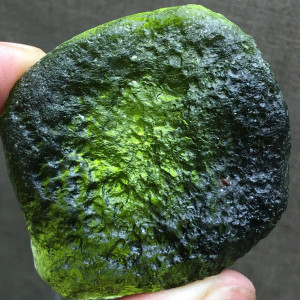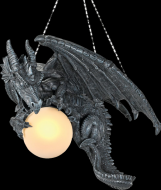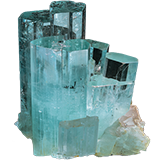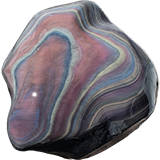Sophia - Wisdom

Sophia (Σοφíα, Greek for "wisdom") is a central idea in Hellenistic philosophy and religion, Platonism, Gnosticism, Orthodox Christianity, Esoteric Christianity, as well as Christian mysticism. Sophiology is a philosophical concept regarding wisdom, as well as a theological concept regarding the wisdom of God.
Platonism
Plato, following his teacher, Socrates (and, it is likely, the older tradition of Pythagoras), understands philosophy as philo-sophia, or, literally, the love of Wisdom. This understanding of philosophia permeates Plato's dialogues, especially the Republic. In that work, the leaders of the proposed utopia are to be philosopher kings: rulers who love sophia, Wisdom.
Sofya is one of the four cardinal virtues of Plato's Protagoras.
The Pythian Oracle (Oracle of Delphi) reportedly answered the question of "who is the wisest man of Greece?" with "Socrates!" Socrates defends this verdict in his Apology to the effect that he, at least, knows that he knows nothing. As is evident in Plato's portrayals of Socrates, this does not mean Socrates' wisdom was the same as knowing nothing; but rather that his skepticism towards his own self-made constructions of knowledge left him free to receive true Wisdom as a spontaneous insight or inspiration. This contrasted with the attitude of contemporaneous Greek Sophists, who claimed to be wise and offered to teach wisdom for pay.
Hebrew Bible and Jewish texts
Septuagint
The Greek noun sophia the translation of "wisdom" in the Greek Septuagint for Hebrew חכמות Ḥokmot. Wisdom is a central topic in the "sapiential" books, i.e. Proverbs, Psalms, Song of Songs, Ecclesiastes, Book of Wisdom, Wisdom of Sirach, and to some extent BaruchApocryphal / Deuterocanonical books of the Old Testament.) (the last three are
In Judaism, wisdom,chokhmah, appears alongside the shekhinah, 'the Glory of God', a figure who plays a key role in the cosmology of the Kabbalists as an expression of the feminine aspect of God.
Philo and the Logos
Philo, a Hellenised Jew writing in Alexandria, attempted to harmonise Platonic philosophy and Jewish scripture. Also influenced by Stoiclogos, "word," for the role and function of Wisdom, a concept later adapted by the author of the Gospel of John in the opening verses and applied to Jesus Christ as the eternal Word (Logos) of God the Father.
Christianity
Further information: Sophiology
In Christian theology, "wisdom" (Hebrew: Chokhmah, Greek: Sophia, Latin: Sapientia) describes an aspect of God, or the theologicalwisdom of God.
New Testament
Jesus directly mentions Wisdom in the Gospel of Matthew:
The Son of man came eating and drinking, and they say, Behold a man gluttonous, and a winebibber, a friend of publicans and sinners. But wisdom is justified of her children.
St. Paul refers to the concept, notably in 1 Corinthians, but obscurely, deconstructing worldly wisdom:
Where is the wise? where is the scribe? where is the disputer of this world? hath not God made foolish the wisdom of this world?
Paul sets worldly wisdom against a higher wisdom of God:
But we speak the wisdom of God in a mystery, even the hidden wisdom, which God ordained before the world unto our glory.
The Epistle of James (James 3:13-18; cf. James 1:5) distinguishes between two kinds of wisdom. One is a false wisdom, which is characterized as "earthly, sensual, devilish" and is associated with strife and contention. The other is the 'wisdom that comes from above':
But the wisdom that is from above is first pure, then peaceable, gentle, [and] easy to be intreated, full of mercy and good fruits, without partiality, and without hypocrisy.Eastern Orthodoxy
In the mystical theology of the Eastern Orthodox Church, Holy Wisdom is understood as the Divine Logos who became incarnate as Jesus Christ, this belief being sometimes also expressed in some Eastern Orthodox icons. In Eastern Orthodoxy humility is the highest wisdom and is to be sought more than any other virtue. It is humility that cultivates not only the Holy Wisdom, but humility (in contrast to knowledge) is the defining quality that grants people salvation and entrance into Heaven. The Hagia Sophia or Holy Wisdom church in Constantinople was the religious center of the Eastern Orthodox Church for nearly a thousand years.
In the liturgy of the Orthodox Church, the exclamation Sophia! or in English Wisdom! will be proclaimed by the deacon or priest at certain moments, especially before the reading of scripture, to draw the congregation's attention to sacred teaching.
The concept of Sophia has been championed as a key part of the Godhead by some Eastern Orthodox religious thinkers. These included Vladimir Solovyov, Pavel Florensky, Nikolai Berdyaev, and Sergei Bulgakov whose book Sophia: The Wisdom of God is in many ways the apotheosis of Sophiology. For Bulgakov, the Sophia is co-existent with the Trinity, operating as the feminine aspect of God in concert with the three masculine principles of the Father, the Son, and the Holy Spirit. Vladimir Lossky rejects Solovyev and Bulgakov's teachings as error. Lossky states that Wisdom as an energy of God (just as love, faith and grace are also energies of God) is not to be ascribed to be the true essence of God, to do so is to deny the apophatic and incomprehensibility of God as God's essence. This is contrary to the official view of the Orthodox Church, where Bulgakov's work was denounced by the Russian Orthodox authorities as heretical.
Roman Catholic mysticism
In Roman Catholic mysticism, Hildegard of Bingen celebrated Sophia as a cosmic figure in both her writing and her art. Sophia, in Catholic theology, is the Wisdom of God, and is thus eternal.
Protestant mysticism
Within the Protestant tradition in England, Jane Leade, 17th-century Christian mystic, Universalist, and founder of the Philadelphian Society, wrote copious descriptions of her visions and dialogues with the "Virgin Sophia" who, she said, revealed to her the spiritual workings of the Universe.
Leade was hugely influenced by the theosophical writings of 16th Century German Christian mystic Jakob Böhme, who also speaks of the Sophia in works such as The Way to Christ. Jakob Böhme was very influential to a number of Christian mystics and religious leaders, including George Rapp and the Harmony Society.
Sophia can be described as the wisdom of God, and, at times, as a pure virgin spirit which emanates from God. The Sophia is seen as being expressed in all creation and the natural world as well as, for some of the Christian mystics mentioned above, integral to the spiritual well-being of humankind, the church, and the cosmos. The Virgin is seen as outside creation but compassionately interceding on behalf of humanity to alleviate its suffering by illuminating true spiritual seekers with wisdom and the love of God.
The main difference between the concept of Sophia found in most traditional forms of Christian mysticism and the one more aligned with the Gnostic view of Sophia is that to many Christian mystics she is not seen as fallen or in need of redemption. Conversely, she is not as central in most forms of established Christianity as she is in Gnosticism, but to some Christian mystics the Sophia is a very important concept.
An interfaith spiritual community currently has its center at what it calls Sancta Sophia Seminary located in Tahlequah, Oklahoma.
Wisdom in Gnosticism
Wisdom (Hebrew chokmah, Greek Σοφíα Sophia, Coptic τcοφια tsophia) is a major theme, along with Knowledge (Greek Gnosis, Coptic sooun), among many of the early Christian knowledge-heresies grouped by the Christian heresiologist Irenaeus as gnostikos, "learned." Gnosticism is a seventeenth century term expanding the definition of Irenaeus' groups to include other syncretic and mystery religions.
Gnostic tradition
In Gnostic tradition, Wisdom (Greek Sophia) is a feminine figure, analogous to the human soul but also simultaneously one of the feminine aspects of God.
Gnostics held that she was the syzygy of Jesus Christ (i.e. the Bride of Christ), and Holy Spirit of the Trinity. She is occasionally referred to by the Hebrew equivalent of Achamōth (Ἀχαμώθ) and as Prunikos (Προύνικος). In the Nag Hammadi texts, Sophia is the lowest Aeon, or anthropic expression of the emanation of the light of God. She is considered to have fallen from grace in some way, in so doing creating or helping to create the material world.
Almost all Gnostic systems of the Syrian or Egyptian type taught that the universe began with an original, unknowable God, referred to as the Parent or Bythos, or as the Monad by Monoimus. From this initial unitary beginning, the One spontaneously emanated further Aeons, being pairs of progressively 'lesser' beings in sequence. Together with the source from which they emanate they form the Pleroma, or fullness, of God, and thus should not be seen as distinct from the divine, but symbolic abstractions of the divine nature. The transition from the immaterial to the material, from the noumenal to the sensible, is brought about by a flaw, or a passion, or a sin, in one of the Aeons.
In most versions of the Gnostic Mythos, it is Sophia who brings about this instability in the Pleroma, in turn bringing about the creation of materiality. According to some Gnostic texts, the crisis occurs as a result of Sophia trying to emanate without her syzygy or, in another tradition, because she tries to breach the barrier between herself and the unknowable Bythos. After cataclysmically falling from the Pleroma, Sophia's fear and anguish of losing her life (just as she lost the light of the One) causes confusion and longing to return to it. Because of these longings, matter (Greek: hylē, ὕλη) and soul (Greek: psychē, ψυχή) accidentally come into existence. The creation of the Demiurgepneuma into his creation.
In the Pistis Sophia, Christ is sent from the Godhead in order to bring Sophia back into the fullness (Pleroma). Christ enables her to again see the light, bringing her knowledge of the spirit (Greek: pneuma, πνευμα). Christ is then sent to earth in the form of the man Jesus to give men the Gnosis needed to rescue themselves from the physical world and return to the spiritual world. In Gnosticism, the Gospel story of Jesus is itself allegorical: it is the Outer Mystery, used as an introduction to Gnosis, rather than being literally true in a historical context. For the Gnostics, the drama of the redemption of the Sophia through Christ or the Logos is the central drama of the universe. The Sophia resides in all of us as the Divine Spark.
Book of Proverbs
Jewish Alexandrine religious philosophy was much occupied with the concept of the Divine Sophia, as the revelation of God's inward thought, and assigned to her not only the formation and ordering of the natural universe (Comp. Clem. Hom. xvi. 12) but also the communication of all insight and knowledge to mankind. In Proverbs 8 Wisdom (the noun is feminine) is described as God's Counsellor and Workmistress (Master-workman, R.V.), who dwelt beside Him before the Creation of the world and sported continually before Him.
In accordance with the description given in the Book of Proverbs, a dwelling-place was assigned by the Gnostics to the Sophia, and her relation to the upper world defined as well as to the seven planetary powers which were placed under her. The seven planetary spheres or heavens were for the ancients the highest regions of the created universe. They were thought of as seven circles rising one above another, and dominated by the seven Archons. These constituted the (Gnostic) Hebdomad. Above the highest of them, and over-vaulting it, was the Ogdoad, the sphere of immutability, which was nigh to the spiritual world (Clemens Alexandrinus, Stromata, iv. 25,161; comp. vi. 16, 138 sqq.) Now we read in Proverbs 9:1:
Wisdom hath builded her house, she hath hewn out her seven pillars:These seven pillars being interpreted of the planetary heavens, the habitation of the Sophia herself was placed above the Hebdomad in the Ogdoad (Excerpt. ex Theodot. 8, 47) It is said further of the same divine wisdom (Proverbs 8:2):
She standeth in the top of high places, by the way in the places of the paths.This meant, according to the Gnostic interpretation, that the Sophia has her dwelling-place "on the heights" above the created universe, in the place of the midst, between the upper and lower world, between the Pleroma and the ektismena. She sits at "the gates of the mighty," i.e. at the approaches to the realms of the seven Archons, and at the "entrances" to the upper realm of light her praise is sung. The Sophia is therefore the highest ruler over the visible universe, and at the same time the mediatrix between the upper and the lower realms. She shapes this mundane universe after the heavenly prototypes, and forms the seven star-circles with their Archons under whose dominion are placed, according to the astrological conceptions of antiquity, the fates of all earthly things, and more especially of man. She is "the mother" or "the mother of the living." (Epiph. Haer. 26, 10) As coming from above, she is herself of pneumatic essence, the mētēr phōteinē (Epiph. 40, 2) or the anō dynamis (Epiph. 39, 2) from which all pneumatic souls draw their origin.
Descent
In reconciling the doctrine of the pneumatic nature of the Sophia with the dwelling-place assigned her, according to the Proverbs, in the kingdom of the midst, and so outside the upper realm of light, there was envisioned a descent of Sophia from her heavenly home, the Pleroma, into the void (kenōma) beneath it. The concept was that of a seizure or robbery of light, or of an outburst and diffusion of light-dew into the kenōma, occasioned by a vivifying movement in the upper world. But inasmuch as the light brought down into the darkness of this lower world was thought of and described as involved in suffering, this suffering must be regarded as a punishment. This inference was further aided by the Platonic notion of a spiritual fall.
Mythos of the soul
Alienated through their own fault from their heavenly home, souls have sunk down into this lower world without utterly losing the remembrance of their former state, and filled with longing for their lost inheritance, these fallen souls are still striving upwards. In this way the Mythos of the fall of Sophia can be regarded as having a typical significance. The fate of the "mother" was regarded as the prototype of what is repeated in the history of all individual souls, which, being of a heavenly pneumatic origin, have fallen from the upper world of light their home, and come under the sway of evil powers, from whom they must endure a long series of sufferings till a return into the upper world be once more vouchsafed them.
But whereas, according to the Platonic philosophy, fallen souls still retain a remembrance of their lost home, this notion was preserved in another form in Gnostic circles. It was taught that the souls of the Pneumatici, having lost the remembrance of their heavenly derivation, required to become once more partakers of Gnosis, or knowledge of their own pneumatic essence, in order to make a return to the realm of light. In the impartation of this Gnosis consists the redemption brought and vouchsafed by Christ to pneumatic souls. But the various fortunes of such souls were wont to be contemplated in those of Sophia, and so it was taught that the Sophia also needed the redemption wrought by Christ, by whom she is delivered from her agnoia and her pathe, and will, at the end of the world's development, be again brought back to her long lost home, the Upper Pleroma, into which this mother will find an entrance along with all pneumatic souls her children, and there, in the heavenly bridal chamber, celebrate the marriage feast of eternity.
Syrian Gnosis
The Sophia-Mythos has in the various Gnostic systems undergone great variety of treatment. The oldest, the Syrian Gnosis, referred to the Sophia the formation of the lower world and the production of its rulers the Archons; and along with this they also ascribed to her the preservation and propagation of the spiritual seed.
As described by Irenaeus, the great Mother-principle of the universe appears as the first woman, the Holy Spirit (rūha d'qudshā) moving over the waters, and is also called the mother of all living. Under her are the four material elements—water, darkness, abyss, and chaos. With her, combine themselves the two supreme masculine lights, the first and the second man, the Father and the Son, the latter being also designated as the Father's ennoia. From their union proceeds the third imperishable light, the third man, Christ. But unable to support the abounding fulness of this light, the mother in giving birth to Christ, suffers a portion of this light to overflow on the left side. While, then, Christ as dexios (He of the right hand) mounts upward with his mother into the imperishable Aeon, that other light which has overflowed on the left hand, sinks down into the lower world, and there produces matter. And this is the Sophia, called also Aristera (she of the left hand), Prouneikos and the male-female.
There is here, as yet, no thought of a fall, properly so called, as in the Valentinian system. The power which has thus overflowed leftwards, makes a voluntary descent into the lower waters, confiding in its possession of the spark of true light. It is, moreover, evident that though mythologically distinguished from the humectatio luminis (Greek: ikmas phōtos, ἰκμὰς φωτός), the Sophia is yet, really nothing else but the light-spark coming from above, entering this lower material world, and becoming here the source of all formation, and of both the higher and the lower life. She swims over the waters, and sets their hitherto immoveable mass in motion, driving them into the abyss, and taking to herself a bodily form from the hylē. She compasses about, and is laden with material every kind of weight and substance, so that, but for the essential spark of light, she would be sunk and lost in the material. Bound to the body which she has assumed and weighed down thereby, she seeks in vain to make her escape from the lower waters, and hasten upwards to rejoin her heavenly mother. Not succeeding in this endeavour, she seeks to preserve, at least, her light-spark from being injured by the lower elements, raises herself by its power to the realm of the upper region, and these spreading out herself she forms out of her own bodily part, the dividing wall of the visible firmament, but still retains the aquatilis corporis typus. Finally seized with a longing for the higher light, she finds, at length, in herself, the power to raise herself even above the heaven of her own forming, and to fully lay aside her corporeity. The body thus abandoned is called "Woman from Woman." The narrative proceeds to tell of the formation of the seven Archons by Sophia herself, of the creation of man, which "the mother" (i.e. not the first woman, but the Sophia) uses as a mean to deprive the Archons of their share of light, of the perpetual conflict on his mother's part with the self-exalting efforts of the Archons, and of her continuous striving to recover again and again the light-spark hidden in human nature, till, at length, Christ comes to her assistance and in answer to her prayers, proceeds to draw all the sparks of light to Himself, unites Himself with the Sophia as the bridegroom with the bride, descends on Jesus who has been prepared, as a pure vessel for His reception, by Sophia, and leaves him again before the crucifixion, ascending with Sophia into the world or Aeon which will never pass away (Irenaeus, i. 30; Epiph. 37, 3, sqq.; Theodoret, h. f. i. 14).
In this system the original cosmogonic significance of the Sophia still stands in the foreground. The antithesis of Christus and Sophia, as He of the right (ho dexios) and She of the Left (hē aristera), as male and female, is but a repetition of the first Cosmogonic Antithesis in another form. The Sophia herself is but a reflex of the "Mother of all living" and is therefore also called "Mother." She is the formatrix of heaven and earth, for as much as mere matter can only receive form through the light which, coming down from above has interpenetrated the dark waters of the hylē; but she is also at the same time the spiritual principle of life in creation, or, as the world-soul the representative of all that is truly pneumatic in this lower world: her fates and experiences represent typically those of the pneumatic soul which has sunk down into chaos.
Prunikos
In the Gnostic system described by Irenaeus (I. xxi. see Ophites). the name Prunikos several times takes the place of Sophia in the relation of her story. The name Prunikos is also given to Sophia in the account of the kindred Barbeliot system, given in the preceding chapter of Irenaeus. Celsus, who shows that he had met with some Ophite work, exhibits acquaintance with the name Prunikos (Orig. Adv. Cels. vi. 34) a name which Origen recognizes as Valentinian. That this Ophite name had really been adopted by the Valentinians is evidenced by its occurrence in a Valentinian fragment preserved by Epiphanius (Epiph. Haer. xxxi. 5). Epiphanius also introduces Prunikos as a technical word in the system of the Simonians (Epiph. Haer. xxi. 2). of those whom he describes under the head of Nicolaitans (Epiph. Haer. xxv. 3, 4) and of the Ophites (Epiph. Haer. xxxvii. 4, 6).
Neither Irenaeus nor Origen indicates that he knew anything as to the meaning of this word; and we have no better information on this subject than a conjecture of Epiphanius (Epiph. Haer. xxv. 48) He says that the word means "wanton" or "lascivious," for that the Greeks had a phrase concerning a man who had debauched a girl, Eprounikeuse tautēn. One feels some hesitation in accepting this explanation. Epiphanius was deeply persuaded of the filthiness of Gnostic morals, and habitually put the worst interpretation on their language. If the phrase reported by Epiphanius had been common, it is strange that instances of its use should not have been quoted from the Greek comic writers. It need not be denied that Epiphanius had heard the phrase employed, but innocent words come to be used in an obscene sense, as well by those who think double entendre witty, as by those who modestly avoid the use of plainer language. The primary meaning of the word prouneikosenenkein, the only derivation indeed that the word seems to admit of. Then, modifying its meaning like the word agoraios, it came to be used in the sense of a turbulent violent person. The only distinct confirmation of the explanation of Epiphanius is that Hesychius (s. v. Skitaloi) has the words aphrodisiōn kai tēs prounikias tēs nykterinēs. This would be decisive, if we could be sure that these words were earlier in date than Epiphanius. seems to be a porter, or bearer of burdens, the derivation being from
In favour of the explanation of Epiphanius is the fact, that in the Gnostic cosmogonical myths, the imagery of sexual passion is constantly introduced. It seems on the whole probable that prouneikos is to be understood in the sense of propherēs which has for one of its meanings[3]Ernst Wilhelm Möller (1860) the name is possibly meant to indicate her attempts to entice away again from the lower Cosmic Powers the seed of Divine light.[4] In the account given by Epiphanius (Haer. 37:6) the allusion to enticements to sexual intercourse which is involved in this name, becomes more prominent.
The Womb, mētra
Nigh related to this is the notion widely diffused among Gnostic sects of the impure mētra (womb) from whence the whole world is supposed to have issued. As according to the Italian Valentinians the Soter opens the mētra of the lower Sophia, (the Enthymēsis), and so occasions the formation of the universe (Iren. I. 3, 4) so on the other hand the mētra itself is personified. So Epiphanius reports (Epiphanius, Haer. 25, 5) the following cosmogony as that of a branch of the Nicolaitans.
In the beginning were Darkness, Chaos, and Water (skotos, kai bythos, kai hydōr), but the Spirit indwelling in the midst of them, divided them one from another. From the intermingling of Darkness with Spirit proceeds the mētra which again is kindled with fresh desire after the Spirit; she gives birth first to four, and then to other four aeons, and so produces a right and a left, light and darkness. Last of all comes forth an aischros aiōn, who has intercourse with the mētra, the offspring whereof are Gods, Angels, Daemons, and Spirits.The Sethians (Hippolytus. Philosophum. v. 19) teach in like manner that from the first concurrence (syndromē) of the three primeval principles arose heaven and earth as a megalē tis idea sphragidos. These have the form of a mētra with the omphalos in the midst. The pregnant mētra therefore contains within itself all kinds of animal forms in the reflex of heaven and earth and all substances found in the middle region. This mētra also encounters us in the great Apophasis ascribed to Simon where it is also called Paradise and Edem as being the locality of man's formation.
These cosmogonic theories have their precedent in the Thalatth or Tiamat of Syrian mythology, the life-mother of whom Berossus has so much to relate, or in the world-egg out of which when cloven asunder heaven and earth and all things proceed. The name of this Berossian Thalatth meets us again among the Peratae of the Philosophumena (Hippolytus, Philosophum. v. 14, p. 128) and is sometimes mistakenly identified with that of the sea—thalassa.
Achamōth
August Hahn (1819) debated whether the name Achamōth (Ἀχαμώθ) is originally derived from the Hebrew Chokhmah (חָכְמָ֑ה), in Aramaic Ḥachmūth or whether it signifies 'She that brings forth'—'Mother.' The Syriac form Ḥachmūth is testified for us as used by Bardesanes,Hachamōth is found only among the Valentinians: the name however probably belongs to the oldest Syrian Gnosis. the Greek form
Baruch-Gnosis
A similar part to that of the mētra is played by Edem consort of Elohim in the Gnostic book Baruch (Hippolytus, Philosoph. v. 18 sqq.) who there appears as a two-shaped being formed above as a woman and from the middle downwards as a serpent (21).
Among the four and twenty Angels which she bears to Elohim, and which form the world out of her members, the second female angelic form is called Achamōs [Achamōth]. Like to this legend of the Philosophumena concerning the Baruch-Gnosis is that which is related by Epiphanius of an Ophite Party that they fabled that a Serpent from the Upper World had had sexual intercourse with the Earth as with a woman (Epiphanius, Haer. 45: 1 cf. 2).
Barbeliotae
Very nigh related to the doctrines of the Gnostics in Irenaeus are the views of the so-called Barbeliotae (Iren. I. 29). The name Barbelo, which according to one interpretation is a designation of the upper Tetrad, has originally nothing to do with the Sophia. This latter Being called also Spiritus Sanctus and Prunikos is the offspring of the first angel who stands at the side of the Monogenes. Sophia seeing that all the rest have each its syzygos within the Pleroma, desires also to find such a consort for herself; and not finding one in the upper world she looks down into the lower regions and being still unsatisfied there she descends at length against the will of the Father into the deep. Here she forms the Demiurge (the Proarchōn), a composite of ignorance and self-exaltation. This Being, by virtue of pneumatic powers stolen from his mother, proceeds to form the lower world. The mother, on the other hand, flees away into the upper regions and makes her dwelling there in the Ogdoad.
The Ophites
We meet this Sophia also among the Ophiana whose "Diagram" is described by Celsus and Origen, as well as among various Gnostic (Ophite) parties mentioned by Epiphanius. She is there called Sophia or Prunikos, the upper mother and upper power, and sits enthroned above the Hebdomad (the seven Planetary Heavens) in the Ogdoad (Origen, Against Celsus. vi. 31, 34, 35, 38; Epiphan. Haer. 25, 3 sqq. 26, 1,10. 39, 2 ; 40, 2) She is also occasionally called Parthenos (Orig. c. Cels. vi. 31) and again is elsewhere identified with the Barbelo or Barbero (Epiph. Haer. 25, 3 ; 26, 1, 10).
Bardesanes
Cosmogonic myths play their part also in the doctrine of Bardesanes. The locus foedus whereon the gods (or Aeons) measured and founded Paradise is the same as the impure mētra, which Ephraim is ashamed even to name (cf. also Ephraim, Hymn 14) The creation of the world is brought to pass through the son of the living one and the Rūha d' Qudshā, the Holy Spirit, with whom Ḥachmūth is identical, but in combination with "creatures," i.e. subordinate beings which co-operate with them (Ephraim, Hymn 3). It is not expressly so said, and yet at the same time is the most probable assumption, that as was the case with the father and mother so also their offspring the son of the Living One, and the Rūha d' Qudshā or Ḥachmūth, are to be regarded as a Syzygy. This last (the Ḥachmūth) brings forth the two daughters, the "Shame of the Dry Land" i.e. the mētra, and the "Image of the Waters" i.e. the Aquatilis Corporis typus, which is mentioned in connection with the Ophitic Sophia. Beside which, in a passage evidently referring to Bardesanes, air, fire, water, and darkness are mentioned as aeons (Īthyē: Hymn 41) These are probably the "Creatures" to which in association with the Son and the Rūha d' Qudshā, Bardesanes is said to have assigned the creation of the world. Though much still remains dark as to the doctrine of Bardesanes we cannot nevertheless have any right to set simply aside the statements of Ephraim, who remains the oldest Syrian source for our knowledge of the doctrine of this Syrian Gnostic, and deserves therefore our chief attentions. Bardesanes, according to Ephraim, is able also to tell of the wife or maiden who having sunk down from the Upper Paradise offers up prayers in her dereliction for help from above, and on being heard returns to the joys of the Upper Paradise.
Acts of Thomas
These statements of Ephraim are further supplemented by the Acts of Thomas in which various hymns have been preserved which are either compositions of Bardesanes himself, or at any rate are productions of his school. In the Syriac text of the Acts, we find the Hymn of the Pearl, where the soul which has been sent down from her heavenly home to fetch the pearl guarded by the serpent, but has forgotten here below her heavenly mission till she is reminded of it by a letter from "the father, the mother, and the brother," performs her task, receives back again her glorious dress, and returns to her old home. Of the other hymns which are preserved in the Greek version more faithfully than in the Syriac text which has undergone Catholic revision, the first deserving of notice is the Ode to the Sophia which describes the marriage of the "maiden" with her heavenly bridegroom and her introduction into the Upper Realm of Light. This "maiden," called "daughter of light," is not as the Catholic reviser supposes the Church, but Ḥachmūth (Sophia) over whose head the "king," i.e. the father of the living ones, sits enthroned; her bridegroom is, according to the most probable interpretation, the son of the living one, i.e. Christ. With her the living Ones i.e. pneumatic souls enter into the Pleroma and receive the glorious light of the living Father and praise along with "the living spirit" the "father of truth" and the "mother of wisdom." The Sophia is also invoked in the first prayer of consecration. She is there called the "merciful mother," the "consort of the masculine one," "revealant of the perfect mysteries," "Mother of the Seven Houses," "who finds rest in the eighth house," i.e. in the Ogdoad. In the second Prayer of Consecration she is also designated, the "perfect Mercy" and "Consort of the Masculine One," but is also called "Holy Spirit" (Syriac Rūha d' Qudshā) "Revealant of the Mysteries of the whole Magnitude," "hidden Mother," "She who knows the Mysteries of the Elect," and "she who partakes in the conflicts of the noble Agonistes" (i.e. of Christ, cf. exc. ex Theod. 58 ho megas agōnistēs Iēsous). There is further a direct reminiscence of the doctrine of Bardesanes when she is invoked as the Holy Dove which has given birth to the two twins, i.e. the two daughters of the Rūha d' Qudshā (ap. Ephraim, Hymn 55).
Simon Magus
This Mythos of the Soul and her descent into this lower world, with her various sufferings and changing fortunes until her final deliverance, recurs in the Simonian system under the form of the All-Mother who issues as its first thought from the Hestōs or highest power of God. She generally bears the name Ennoia, but is also called Wisdom (Sophia), Ruler, Holy Spirit, Prunikos, Barbelo. Having sunk down from the highest heavens into the lowest regions, she creates angels and archangels, and these again create and rule the material universe. Restrained and held down by the power of this lower world, she is hindered from returning to the kingdom of the Father. According to one representation she suffers all manner of insult from the angels and archangels bound and forced again and again into fresh earthly bodies, and compelled for centuries to wander in ever new corporeal forms. According to another account she is in herself incapable of suffering, but is sent into this lower world and undergoes perpetual transformation in order to excite by her beauty the angels and powers, to impel them to engage in perpetual strife, and so gradually to deprive them of their store of heavenly light. The Hestōs himself at length comes down from the highest heaven in a phantasmal body in order to deliver the suffering Ennoia, and redeem the souls held in captivity by imparting gnosis to them.
The most frequent designation of the Simonian Ennoia is "the lost" or "the wandering sheep." The Greek divinities Zeus and Athena were interpreted to signify Hestōs and his Ennoia, and in like manner the Tyrian sun-god Herakles-Melkart and the moon-goddess Selene-Astarte. So also the Homeric Helena, as the cause of quarrel between Greeks and Trojans, was regarded as a type of the Ennoia. The story which the fathers of the church handed down of the intercourse of Simon Magus with his consort Helena, had probably its origin in this allegorical interpretation according to Richard Adelbert Lipsius (1867) and in his comments on Iren. i. 23 ; Tertullian de Anima, 34; Epiphanius Haer. 21; Pseudo-Tertullian Haer. 1; Philaster, Haer. 29; Philos. vi. 19, 20, p. 174 sqq.; Recogn. Clem. ii. 12; Hom. ii. 25.
In the Simonian Apophasis the great dynamis (also called Nous) and the great epinoia which gives birth to all things form a syzygy, from which proceeds the male-female Being, who is called Hestōs (Philos. vi. 18, p. 172) Elsewhere nous and epinoia are called the upper-most of the three Simonian Syzygies, to which the Hestōs forms the Hebdomad: but on the other hand, nous and epinoia are identified with heaven and earth (Philos. vi. 12 sqq., p. 165 sqq).
Valentinus
The most significant development of this Sophia-Mythos is found in the Valentinian system. The descent of the Sophia from the Pleroma is ascribed after Plato's manner to a fall, and as the final cause of this fall a state of suffering is indicated which has penetrated into the Pleroma itself. Sophia or Mētēr is in the doctrine of Valentinus the last, i.e. the thirtieth Aeon in the Pleroma, from which having fallen out, she now in remembrance of the better world which she has thus forsaken, gives birth to the Christus "with a shadow" (meta skias tinos). While Christus returns to the Pleroma, Sophia forms the Demiurge and this whole lower world out of the skia, a right and a left principle (Iren. Haer. i. 11, 1). For her redemption comes down to Sophia either Christus himself (Iren. i. 15, 3) or the Soter (Iren. i. 11, 1, cf. exc. ex Theod. 23; 41). as the common product of the Aeons, in order to bring her back to the Pleroma and unite her again with her syzygos. The motive for the Sophia's fall was defined according to the Anatolian school to have lain therein, that by her desire to know what lay beyond the limits of the knowable she had brought herself into a state of ignorance and formlessness. Her suffering extends to the whole Pleroma. But whereas this is confirmed thereby in fresh strength, the Sophia is separated from it and gives birth outside it (by means of her ennoia, her recollections of the higher world), to the Christus who at once ascends into the Pleroma, and after this she produces an ousia amorphos, the image of her suffering, out of which the Demiurge and the lower world come into existence; last of all looking upwards in her helpless condition, and imploring light, she finally gives birth to the spermata tēs ekklēsias, the pneumatic souls. In the work of redemption the Soter comes down accompanied by the masculine angels who are to be the future syzygoi of the (feminine) souls of the Pneumatici, and introduces the Sophia along with these Pneumatici into the heavenly bridal chamber (Exc. ex Theod. 29-42; Iren. i. 2, 3) The same view, essentially meets us in the accounts of Marcus, (Iren. i. 18, 4 ; cf. 15, 3; 16, 1,2; 17, 1) and in the Epitomators of the Syntagma of Hippolytus (Pseudo-Tertullian Haer. 12; Philaster, Haer. 38).
Ptolemaeus
The Italic school distinguished on the other hand a two-fold Sophia, the ano Sophia and the katō Sophia or Achamoth. According to the doctrine of Ptolemaeus and that of his disciples, the former of these separates herself from her syzygos, the thelētos through her audacious longing after immediate Communion with the Father of all, falls into a condition of suffering, and would completely melt away in this inordinate desire, unless the Horos had purified her from her suffering and established her again in the Pleroma. Her enthymēsis, on the other hand, the desire which has obtained the mastery over her and the consequent suffering becomes an amorphos kai aneideos ousia, which is also called an ektrōma, is separated from her and is assigned a place beyond the limits of the Pleroma.
From her dwelling-place above the Hebdomad, in the place of the Midst, she is also called Ogdoad (Ὀγδοάς), and further entitled Mētēr, Sophia also, and he Hierousalēm, Pneuma hagion, and (arsenikōs) Kyrios. In these names some partial reminiscences of the old Ophitic Gnosis are retained. The Achamoth first receives (by means of Christus and Pneuma hagion the Pair of Aeons within the Pleroma whose emanation is most recent), the morphōsis kat' ousian. Left alone in her suffering she has become endued with penitent mind (epistrophē). Now descends the son as the common fruit of the Pleroma, gives her the morphōsis kata gnōsin, and forms out of her various affections the Demiurge and the various constituents of this lower world. By his appointment the Achamoth produces the pneumatic seed (the ekklēsia). The end of the world's history is here also (as above) the introduction of the lower Sophia with all her pneumatic offspring into the Pleroma, and this intimately connected with the second descent of the Soter and his transient union with the psychical Christus; then follows the marriage-union of the Achamoth with the Soter and of the pneumatic souls with the angels (Iren. i. 1-7; exc. ex Theod. 43-65) The same form of doctrine meets us also in Secundus, who is said to have been the first to have made the distinction of an upper and a lower Sophia, (Iren. i. 11, 2) and in the account which the Philosophumena give us of a system which most probably referred to the school of Heracleon, and which also speaks of a double Sophia (Philos. vi. 29-35). The name Jerusalem also for the exō Sophia meets us here (Philos. vi. 32, p. 191; 34) It finds its interpretation in the fragments of Heracleon (ap. Origen. in Joann. tom. x. 19) The name Achamoth, on the other hand, is wanting both in Hippolytus and in Heracleon. One school among the Marcosians seems also to have taught a two-fold Sophia (Iren. i. 16, 3; cf. 21, 5).
Pistis Sophia
A special and richly coloured development is given to the mythical form of the Sophia of the Gnostic Book Pistis Sophia. The two first books of this writing to which the name Pistis Sophia properly belongs, treat for the greater part (Pistis Sophia pp.42-181) of the fall, the Repentance, and the Redemption of the Sophia. She has by the ordinance of higher powers obtained an insight into the dwelling-place appropriated to her in the spiritual world, namely, the thēsauros lucis which lies beyond the XIIIth Aeon. By her endeavours to direct thither her upward flight, she draws upon herself the enmity of the Authadēs, Archon of the XIIIth Aeon, and of the Archons of the XII. Aeons under him; by these she is enticed down into the depths of chaos, and is there tormented in the greatest possible variety of ways, in order that so she may incur the loss of her light-nature. In her utmost need she addresses thirteen penitent prayers (metanoiai) to the Upper Light. Step by step she is led upwards by Christus into the higher regions, though she still remains obnoxious to the assaults of the Archons, and is, after offering her XIIIth Metanoia, more vehemently attacked than ever, till at length Christus leads her down into an intermediate place below the XIIIth Aeon, where she remains till the consummation of the world, and sends up grateful hymns of praise and thanksgiving. The earthly work of redemption having been at length accomplished, the Sophia returns to her original celestial home.
The peculiar feature in this representation consists in the further development of the philosophical ideas which find general expression in the Sophia-Mythos. According to Karl Reinhold von Köstlin (1854) Sophia is here not merely, as with Valentinus, the representative of the longing which the finite spirit feels for the knowledge of the infinite, but at the same time a type or pattern of faith, of repentance, and of hope. After her restoration she announces to her companions the twofold truth that, while every attempt to overstep the divinely ordained limits, has for its consequence suffering and punishment, so, on the other hand, the divine compassion is ever ready to vouchsafe pardon to the penitent.
We have a further reminiscence of the Sophia of the older Gnostic systems in what is said in the book Pistis Sophia of the Light-Maiden (parthenos lucis), who is there clearly distinguished from the Sophia herself, and appears as the archetype of Astraea, the ConstellationVirgo. The station which she holds is in the place of the midst, above the habitation assigned to the Sophia in the XIIIth Aeon. She is the judge of (departed) souls, either opening for them or closing against them the portals of the light-realm (Pistis Sophia pp.194-295). Under her stand yet seven other light-maidens with similar functions, who impart to pious souls their final consecrations (p. 291 sq. 327 sq. 334). From the place of the parthenos lucis comes the sun-dragon, which is daily borne along by four light-powers in the shape of white horses, and so makes his circuit round the earth (p. 183, cf. p. 18, 309).
Nag Hammadi texts
In On the Origin of the World, Sophia is depicted as the ultimate destroyer of this material universe, Yaldabaoth and all his Heavens:
She [Sophia] will cast them down into the abyss. They [the Archons] will be obliterated because of their wickedness. For they will come to be like volcanoes and consume one another until they perish at the hand of the prime parent. When he has destroyed them, he will turn against himself and destroy himself until he ceases to exist. And their heavens will fall one upon the next and their forces will be consumed by fire. Their eternal realms, too, will be overturned. And his heaven will fall and break in two. His [...] will fall down upon the [...] support them; they will fall into the abyss, and the abyss will be overturned. The light will [...] the darkness and obliterate it: it will be like something that never was.
ManichaeismThis light-maiden (parthenos tou phōtos) encounters us also among the Manichaeans as exciting the impure desires of the Daemons, and thereby setting free the light which has hitherto been held down by the power of darkness (Dispuiat. Archelai et Manetis, c. 8, n. 11; Theodoret., h. f. I. 26) found also in the Acts of Thomas. On the other hand, the place of the Gnostic Sophia is among Manichaeans taken by the "Mother of Life" (mētēr tēs zōēs), and by the World-Soul (psychē hapantōn), which on occasions is distinguished from the Life-Mother, and is regarded as diffused through all living creatures, whose deliverance from the realm of darkness constitutes the whole of the world's history (Titus of Bostra, adv. Manich. I., 29, 36, ed. Lagarde, p. 17 sqq. 23; Alexander Lycopolitus c. 3; Epiphan. Haer. 66, 24; Acta dispatat. Archelai et Manetis, c. 7 sq. et passim). Their return to the world of light is described in the famous Canticum Amatorium (ap. Augustin. c. Faust, iv. 5 sqq).














































Pokud chcete ocenit naši práci, můžete ZDE